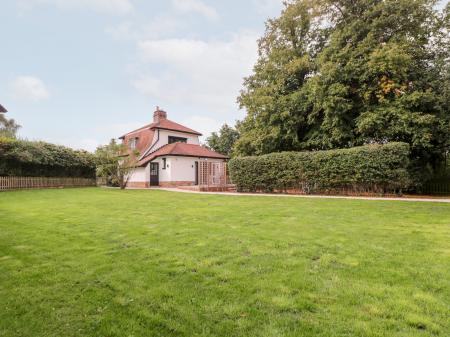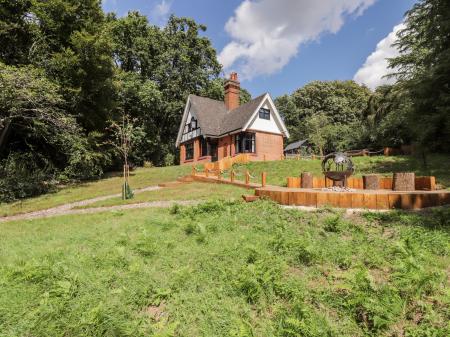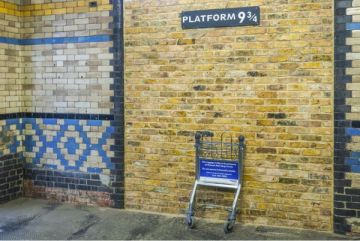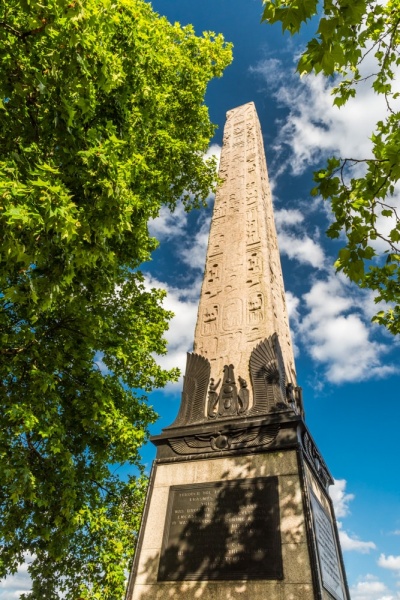
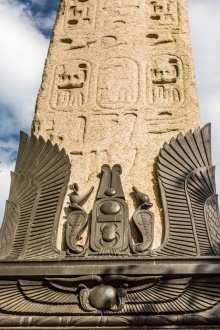
Though the British government accepted the gift of the obelisk, it did not want to pay the considerable expense of transporting the monument to Britain. So there the Needle lay, buried in the sand.
The Turkish rulers of Egypt periodically offered it to the British government, who declined the honour each time. They briefly considered bringing it to London to mark the Great Exhibition of 1851 but decided against the notion because of the cost.
In 1867 the land where the obelisk lay was purchased by a Greek merchant. The merchant threatened to break up the monument, but once more the government refused to act. In desperation, Sir William Wilson paid £10,000 of his own money to transport Cleopatra's Needle to England.
A Fatal Voyage
That journey to Britain is perhaps as interesting as the Needle itself; the obelisk was encased in a specially built tubular cage, with a rudder and keel, sail, and wheel, manned by a captain and five crewmen, and towed like a pontoon behind a ship called Olga. The peculiar cylinder looked like an elongated cigar or a very early precursor of a submarine. The cylinder was given the name Cleopatra as if it were an ordinary ship.
The voyage was beset by storms in the Bay of Biscay, and the Needle had to be cut adrift from the Olga for safety. Eight crewmembers were clinging to the Cleopatra's superstructure, so the Olga lowered a lifeboat to rescue them. Tragically, the lifeboat was sunk in the heavy seas and six sailors lost their lives.
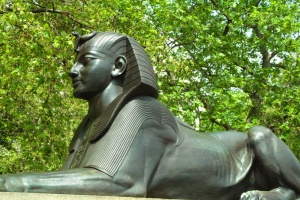
base of the Needle
The Cleopatra was eventually rescued by a merchant vessel, and towed into a Spanish port. Three months later, in early 1878, it finally made the last leg of its journey to England.
In the meantime, the government was having to decide where to erect the Needle. A site in Parliament Square was mooted, and a trial model of the obelisk was erected, but the site was rejected. A new site was proposed in Embankment Gardens, but District Railway officials complained that the heavy column might crash through onto trains running beneath the gardens. All this while the obelisk was the subject of public ridicule; it was called 'fatally suggestive of a factory chimney'.
Finally, a place was found on Victoria Embankment. On 12 September 1878 Cleopatra's Needle was raised on a timber scaffold by hydraulic jacks, then tipped into place.
What is Cleopatra's Needle?
Cleopatra's Needle is a granite obelisk standing approximately 68 feet high and weighing 180 tons. It was made around 1450 BCE by order of Pharoah Tutmos III, from stone quarried near Aswan.
Hieroglyphic symbols commemorating military victories were added to the column two centuries later by Ramses II. The Romans moved the obelisk to Alexandria around 12 BCE. At some point the needle fell or was intentionally toppled, and lay, protected by the surrounding sand, for centuries.
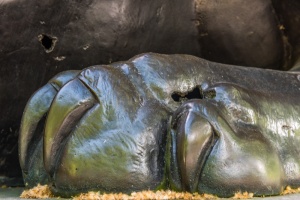
right-hand sphinx
It should be noted that the Needle has nothing to do with Cleopatra; it was as much as 1400 years old before Cleopatra was born.
The Needle is flanked by a pair of stylized statues of Egyptian lions, or sphinxes. These are Victorian additions and have no actual connection to the obelisk. Curiously, the lions originally faced outwards, away from the Needle, as if protecting it. They were later turned inwards, towards the Needle, by a contractor's error. The error was never rectified and the sphinxes still face the wrong way today.
The Needle's pedestal bears a plaque that reads:
This obelisk
Prostrate for centuries
on the sands of Alexandria
was presented to the
British nation A.D. 1819 by
Mahommed Ali Viceroy of Egypt
A worthy memorial of
our distinguished countrymen
Nelson and Abercromby
Another plaque commemorates the six sailors who lost their lives in the Bay of Biscay while transporting Cleopatra's Needle to England. The plaque reads:
William Askin | Michael Burns
James Gardiner | William Donald
Joseph Benbow | William Patan
Perished in a bold attempt
to succour the crew of the
obelisk ship 'Cleopatra' during
the storm October 14th 1877
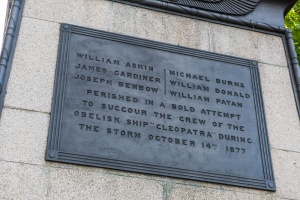
The Time Capsule
When the Needle was erected a time capsule was set beneath it. In this were placed items symbolic of the British way of life. The contents of the time capsule make a fascinating statement about Victorian attitudes, for the chosen items include a gentleman's lounge suit, a selection of illustrated newspapers including that day's issue of The Times, Bradshaw's Railway Guide, Queen Victoria's portrait, a complete set of ladies dress and toiletries, Bibles, children's toys, a set of coins, a razor, and, to cap it all off, pictures of the most beautiful women in the realm.
A popular piece of doggerel describes the public's attitude towards Cleopatra's Needle:
This monument as some supposes
Was looked on in old days by Moses
It passed in time to Greeks and Turks
And stuck up here by the Board of Works
On 4 September 1917 German aircraft made their first bombing raid on London. Several bombs fell in the roadway beside Cleopatra's Needle. You can see the scars left by the bombs on the sphinx bases, the obelisk's pedestal, and the right-hand sphinx. For example, you can easily see holes made by the bombs in the sphinx's left rear paw.
Getting There
Finding Cleopatra's Needle is easy. It is located between Savoy Pier and Embankment Pier, opposite from Victoria Embankment Gardens. The nearest tube station is Embankment. From the station exit, cross Victoria Embankment to the riverside walk and turn north (left). Cleopatra's Needle is clearly visible by the riverside directly ahead of you.
 We've 'tagged' this attraction information to help you find related historic attractions and learn more about major time periods mentioned.
We've 'tagged' this attraction information to help you find related historic attractions and learn more about major time periods mentioned.